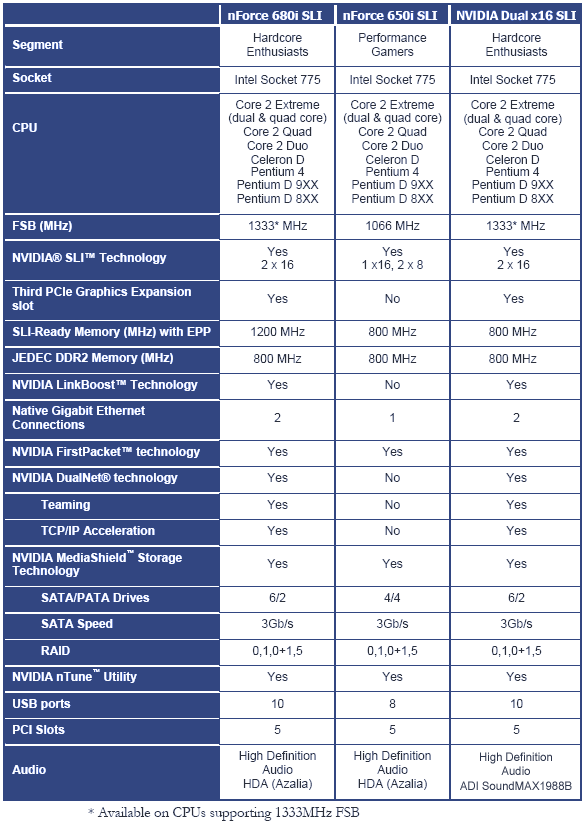Hybrid vs Native Dual X16 SLI: Asus P5N32-E SLI Plus vs Abit IN9 32X-MAX
Introduction and the nForce 600 Chipset

In early November of last year, NVIDIA unveiled their successor to the nForce 5, the nForce 600 series. The starting line-up included three solutions supporting Intel's Core 2 processor, each aimed at a different segment of the market and each with a different price point. The most expensive chipset in the series, the high-end 680i SLI provided a host of new features including dual X16 SLI support with a third X8 PCI-E slot. Next comes the 650i SLI, which lacks many of the 680i's fancier features like dual x16 SLI support, but makes up for it with a significantly lower price point. Finally at the low end is the 650i Ultra, which lacks SLI support altogether.
While the three boards in the series did a good job of covering the different segments of the market, there was a significant price gap between the 680i SLI and the 650i SLI chipsets. Going from a 650i SLI to a 680i SLI usually meant a price increase of about $100. ASUS found a solution to the problem by introducing a board that offered most of the same features of the 680i SLI at a lower price, fitting right into the price gap . They did this by creating their own hybrid chipset in cooperation with NVIDIA, dubbed the "NVIDIA Dual X16 SLI".
To give birth to the NVIDIA Dual X16 SLI, ASUS mated a nForce 650i SLI northbridge with a AMD edition nForce 570 SLI MCP southbridge. The 650i SLI northbridge provides support for one of two X16 PCI-E slots while handling communications with the processor and memory. The 570 SLI MCP southbridge provides the bandwidth for the second X16 PCI-E slot, as well as a third full-sized PCI-E slot with an X8 electrical connection, in addition to handling the board's storage features. This results in a hybrid chipset with a nearly identical feature set compared to the nForce 680i SLI, including the coveted dual X16 SLI support. In order to keep costs down, ASUS put their new hybrid chipset on the same PCB used by the P5N32-E SLI and the Striker Extreme. Finally, they named it P5N32-E SLI Plus.

As you can see in the chart above, ASUS' hybrid chipset sports a near identical feature set to the nForce 680i SLI. The only department where it falls behind is SLI-ready memory, since the chipset uses a 650i SLI to communicate with the memory. Since the P5N32-E SLI Plus currently retails for about $180, it has the potential of delivering nForce 680i SLI level performance and features at a near 650i SLI price.
But wait, didn't NVIDIA recently solve the price gap problem with the introduction of the 680i LT SLI? This is technically true, since the new chipset sits in the price gap and offers several key 680i SLI features that the 650i SLI chipset lacks. However, NVIDIA had to cut several features in order to keep the price of the 680i LT SLI down. The features that were cut from the 680i LT SLI include dual LAN support, the third PCI-E x16 slot and no DDR2-1200 support. As we saw in the above chart, ASUS' hybrid chipset has all of these features. The 680i LT SLI can currently be found for about $190. This puts the 680i LT SLI at a notable disadvantage to ASUS' hybrid chipset which offers more features for slightly less money.
By now your probably curious; can ASUS' "NVIDIA Dual X16 SLI" chipset really offer 680i SLI level performance for a near 650i SLI price? We set out to find the answer to that very question. We decided to pit the P5N32-E SLI up against a true nForce 680i SLI board. We wanted to see how ASUS' hybrid chipset will stand up to the onslaught of Abit's flagship 680i based motherboard, the impressive IN9 32X-MAX. Read on for our evaluations of both boards and a head-to-head performance comparison.






